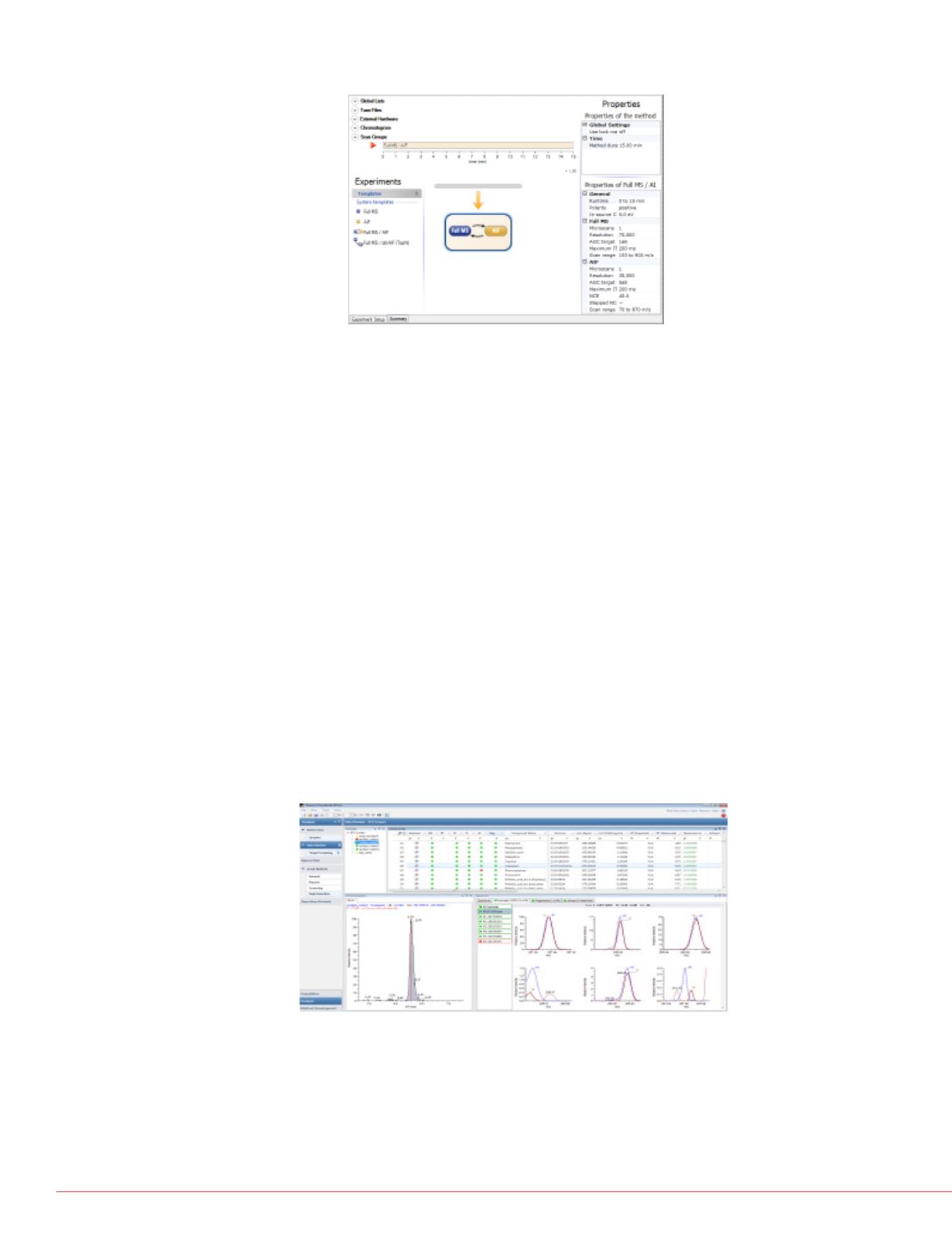

4
A Strategy for an Unknown Screening Approach on Environmental Samples using HRAM Mass Spectrometry
FIGURE 2. Exactive Plus method setup.
FIGURE 5. PCA resu
differences.
surfacewater3
surfacewater4
surfacewater2
nknown Screening approach
mples form the city of Berlin,
full scan / AIF mode with a
e Plus™ mass spectrometer
tomated workflow using
er™ 3.1 and Thermo
are.
load of contaminants could be
erent samples; Easy detection
icant number of contaminants
vironmental samples for
become a quick and cost
when run in a targeted
gards events or
o account beforehand. Run in
known to be laborious and
verything but a routine
software now links in
screening approaches to one
w, tying together component
nown screening workflows
ilities of targeted screening
Here we show how one data
h throughput quantitative
n-targeted investigations in a
or an Unknown Screening Approach on Environmenta
Mass Spectrometry
. van Baar
2
, F. Wode
2
, U. Dünnbier
2
, K. Akervik
3
, J. Humphries
3
, M. Brom
Scientific, Bremen, Germany,
2
Berliner Wasserbetriebe, Berlin, Germany,
n, TX, USA
Results
Suspect Screening
The more simple way of screening is the suspect screen,
using a large list of components possibly present in a
sample. It avoids the critical step of condition free
component detection, but works already without analytical
standards which could serve for confirmation by providing
valid retention time, ion ratios and more. In this case, a
built-in database with about 1000 components was used,
containing name, elemental composition and fragment
information. Additionally, a matching spectral library
containing roughly 4000 HRAM MS
2
spectra is available
inside the application. As a result, isotopic pattern match,
fragment search and MS
2
library search were used for
result confirmation (see Fig. 3).
FIGURE 3. Suspect screening result view.
As to be expected, it was possible to identify a good
number of contaminants, yielding a match on all three
confirming points. On the other it was clear that this way of
screening did not cover all possible compounds, as was
visible from the neat standard (as used normally for target
screening on these samples) measured in the same
batch. A clear benefit could be seen in the fact that
fragment information and library spectra were present for
This time the filter wa
changes in the sampl
2. This reduced the li
sent to ChemSpider f
1529 identifications.
automatically transfer
TraceFinder, where it
database (see Fig. 6).
FIGURE 6. Confirma
results from SIEVE,
example: The extrac
determined retentio
from interferences, t
close to perfect ove
For confirmation and
compound database
screening. The advan
TraceFinder was to b
suspect and unknown
be able to use the sa
It became visible that
with higher amounts
extract significant sig



















